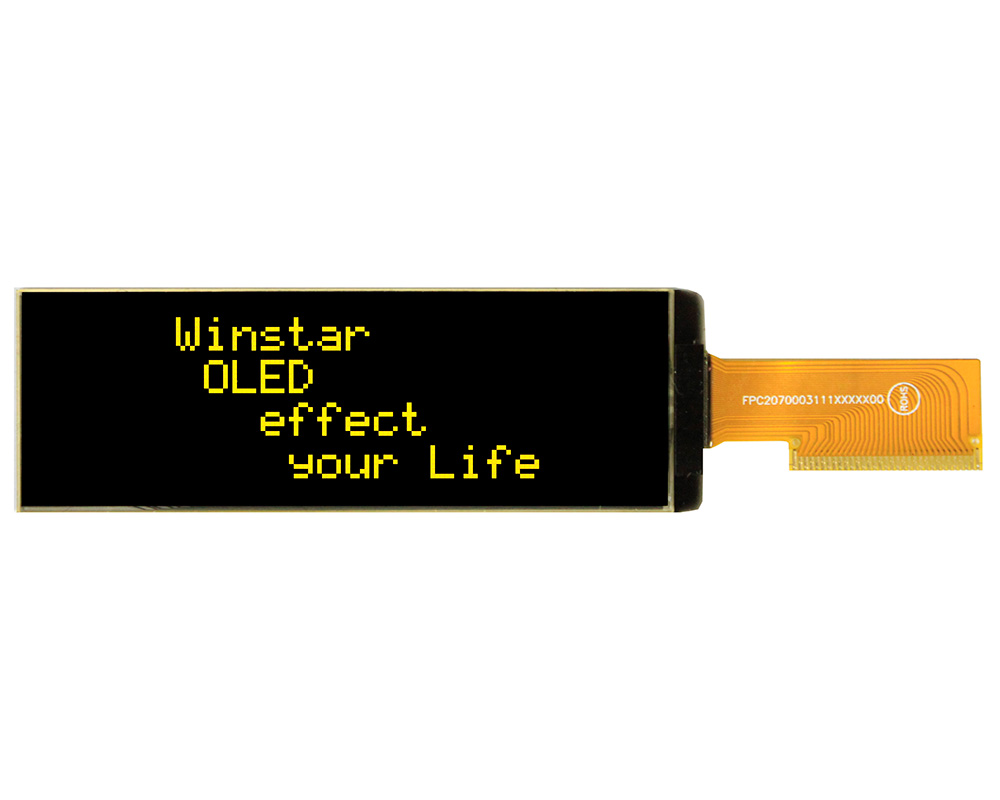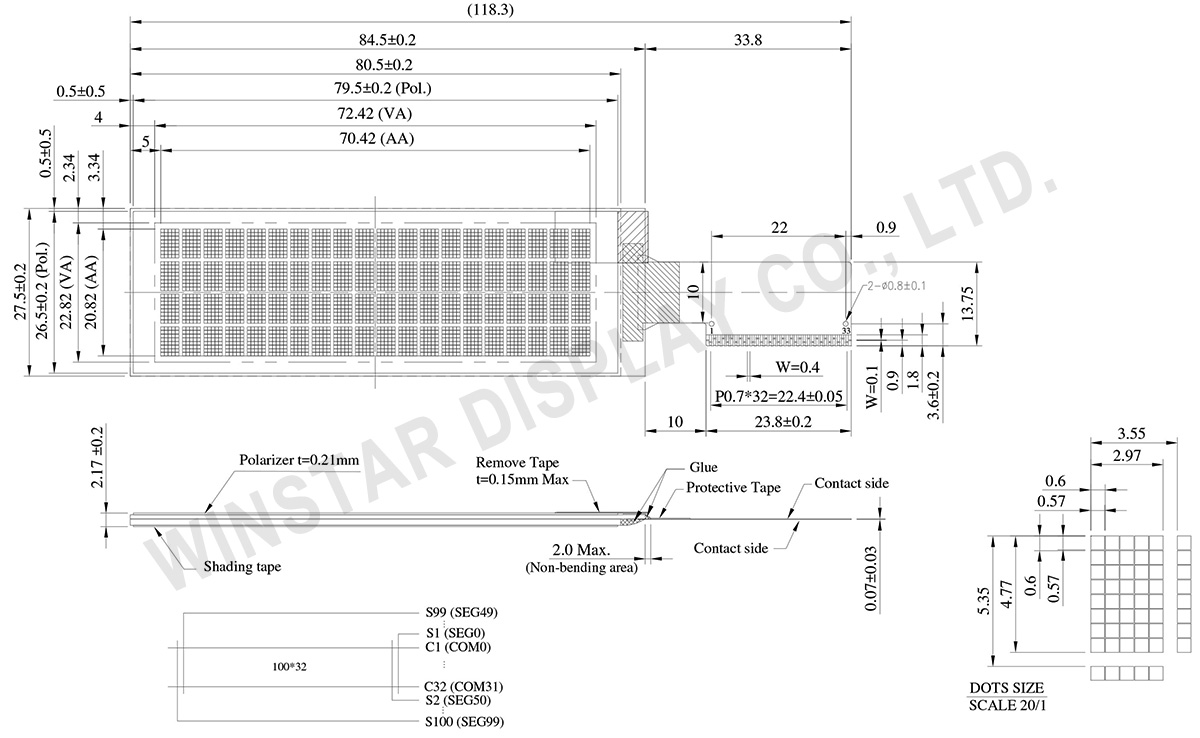O módulo de display OLED 20x4 COG SSD1311 (Modelo: WEO002004C) apresenta um design COG (Chip On Glass), oferecendo uma solução de display de alta performance e confiabilidade. Este módulo de display OLED SSD1311 é conhecido pela sua excelente qualidade de exibição e durabilidade, tornando-o ideal para uma variedade de aplicações.
As dimensões do módulo são 84,5 x 27,5 mm com uma espessura de 2,17 mm, e a área ativa é de 70,42 x 20,82 mm, com um tamanho diagonal de 2,89 polegadas. Equipado com um IC controlador SSD1311, o WEO002004C suporta um conjunto de caracteres integrado, incluindo caracteres ASCII, ingleses, europeus e japoneses. Cada caractere é composto por 5x8 pixels, garantindo uma representação detalhada e clara do texto.
O modo de exibição deste módulo é de 4 linhas, com cada linha capaz de mostrar 20 caracteres. Devido à natureza auto-emissiva da tecnologia OLED, este módulo não requer retroiluminação, resultando em um design mais leve e fino, além de uma relação de contraste aprimorada de 10.000:1. Além disso, oferece um ângulo de visão ultra-amplo de até 175 graus, garantindo uma qualidade de exibição consistente a partir de vários ângulos. O módulo também apresenta baixo consumo de energia e uma ampla faixa de temperatura de operação, demonstrando sua versatilidade.
A faixa de temperatura de operação do WEO002004C é de -40°C a +80°C, com uma faixa de temperatura de armazenamento de -40°C a +85°C, permitindo um desempenho estável em condições extremas. O módulo opera dentro de uma faixa de tensão lógica de 2,4V a 3,3V, com um valor típico de 3V, e utiliza um método de acionamento de 1/32 duty.
Além disso, o WEO002004C suporta várias opções de interface, incluindo interfaces paralelas de 8 bits 6800/8080 e interfaces seriais I2C/SPI, oferecendo conectividade flexível para atender diferentes requisitos de sistema. A série de módulos também oferece várias opções de Circuito Impresso Flexível (FPC) para atender às diversas necessidades dos clientes.
Com sua qualidade de exibição confiável, ampla faixa de temperatura de operação e opções flexíveis de interface, o módulo OLED WEO002004C com IC controlador SSD1311 é uma alternativa prática aos módulos LCD tradicionais. Recomendamos considerar este módulo OLED 20x4 para melhorar o desempenho de exibição do seu produto, alcançando uma qualidade superior de exibição e menor consumo de energia.
 FPC Options
FPC Options








